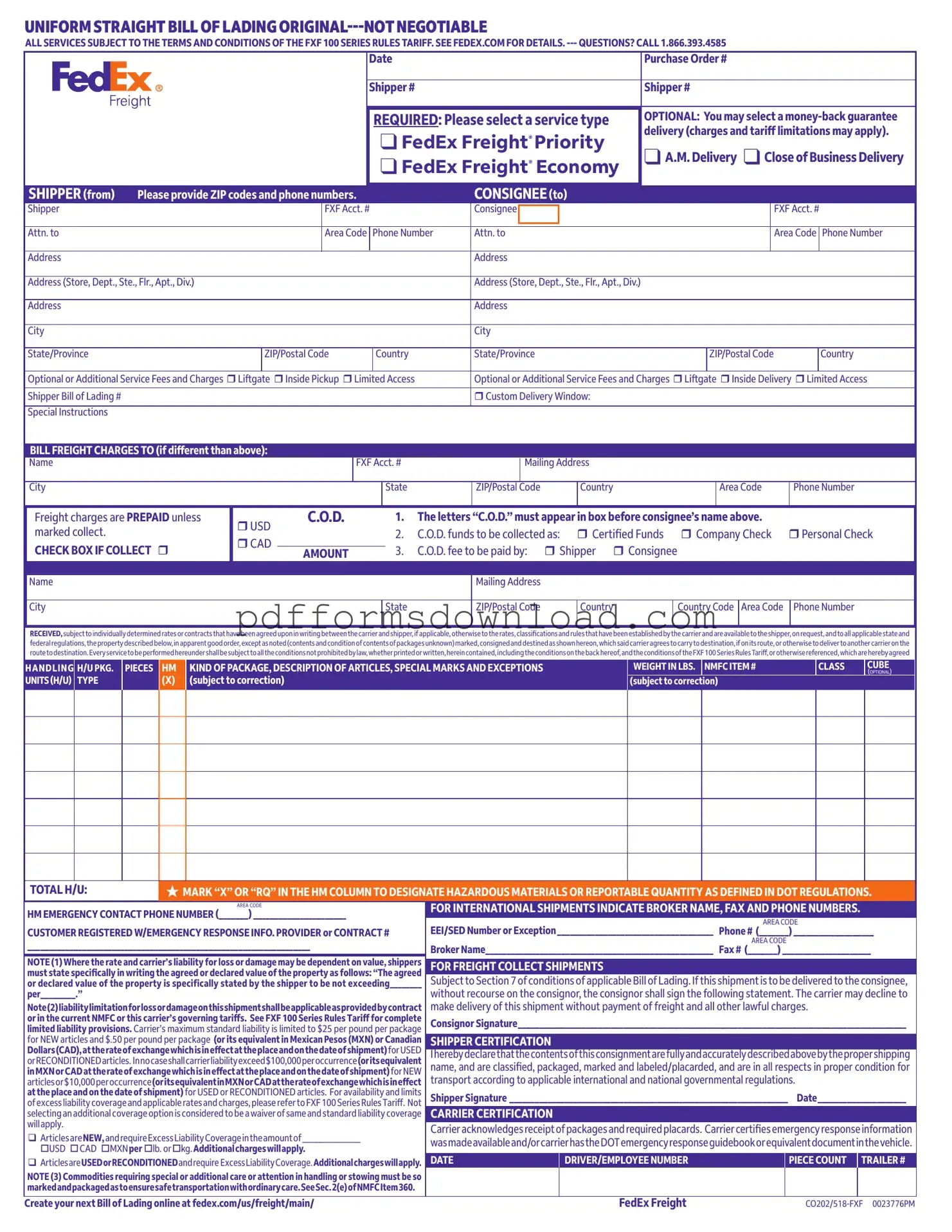What is a FedEx Bill of Lading?
A FedEx Bill of Lading is a crucial shipping document that serves as a contract between the shipper and the carrier. It outlines the terms of transportation, including the nature of the goods, shipping charges, and delivery instructions. This document is essential for tracking shipments and ensuring that both parties understand their responsibilities. It is important to fill out this form accurately to avoid any issues during transit.
What information is required on the FedEx Bill of Lading?
To complete the FedEx Bill of Lading, you need to provide specific information about the shipment. This includes details about the shipper and consignee, such as names, addresses, and contact numbers. You must also specify the service type, weight, and description of the items being shipped. If applicable, you should indicate any special handling requirements and whether the freight charges will be prepaid or collected. Accurate information helps ensure smooth processing and delivery of your shipment.
What are the liability limits associated with the FedEx Bill of Lading?
The FedEx Bill of Lading outlines specific liability limits for loss or damage during transit. For new articles, the carrier's maximum liability is typically limited to $25 per pound per package. For used or reconditioned items, this limit is reduced to $0.50 per pound. However, you can opt for additional liability coverage for an extra fee. It’s vital to understand these limits when shipping valuable items, as they dictate the compensation you may receive in case of loss or damage.
How can I create a FedEx Bill of Lading?
You can create your FedEx Bill of Lading online through the FedEx website. Simply visit fedex.com/us/freight/main/ and follow the prompts to enter the necessary information about your shipment. This online tool guides you through the process, ensuring that you include all required details. Once completed, you can print the Bill of Lading for your records and attach it to your shipment.
